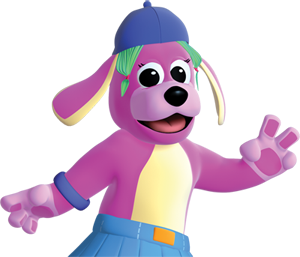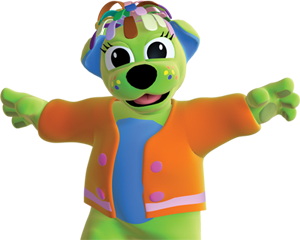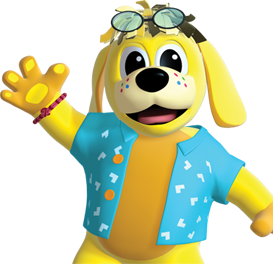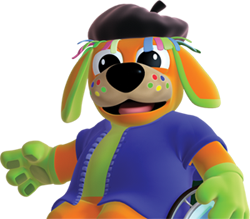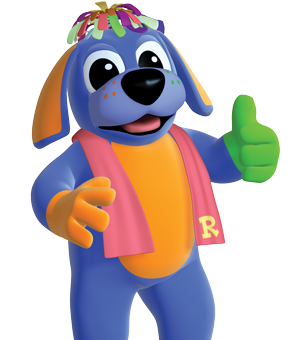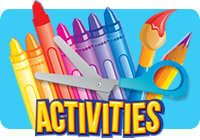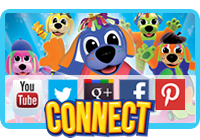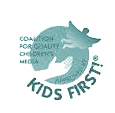About the TV Series
Raggs is a musical & educational preschool series starring five colorful canines. They are not your average dogs – they’re also talented musicians who make great rock ‘n’ roll music as The Raggs Band. With over 200 original songs, the power of the music & humor stimulate children to become actively involved in learning. Raggs introduces children to elements that span the preschool curriculum, working to nurture their sense of self & others, and to foster a strong motivation to learn and achieve.
Each episode follows the band through engaging, emotional and humorous stories that rock the house and explore issues faced by real kids. The character’s chemistry and friendship is immediately evident as they work through a series of creative and often humorous steps to find a successful conclusion to everyday challenges. Music is an integral part of this fast-paced show and provides a hook to engage young viewers as the band goes from one adventure to the next. Each program is based on one main theme that promotes social and academic readiness while also addressing specific preschool curriculum topics such as:
- Emergent literacy
- Mathematics
- Science and discovery
- Social studies
- Arts & movement
Each show also focuses on the development of social and emotional skills, and models cooperation between friends. The format is innovative and contemporary in its ability to knit together and reinforce a single theme through the use of various segments: live action clubhouse segments, animation shorts, music videos and interviews with children by the band’s wisecracking pet cat, Dumpster. Interactive studio concerts featuring real-life fans and a “Wag & Wiggle” dance segment promote movement and physical fitness — adding another dimension and heightening the entertainment value.
Educational Philosophy
Educational Objective
Raggs has three primary educational goals, which are aligned with the National Association for the Education of Young Children’s Guidelines for Pre-Kindergarten Learning and Teaching:
- To nurture three – to six-year-olds’ sense of self and others, and to foster a strong motivation to learn and achieve.
- To introduce children to elements of academic learning that span the preschool curriculum.
- To use the power of music and humor to stimulate children to become actively involved in learning.
Each of these goals is divided into a variety of subgoals as seen in the Full Statement of Educational Goals.
Educational Approach
Several key features characterize the way these goals are implemented in Raggs:
In Raggs, the characters don’t just learn information that’s taught by others. Instead, they work as a team to discover new concepts, try things out… and have a great time along the way!
The lessons in each episode are conveyed in multiple ways: via stories, songs, animation, and live-action footage of real kids and families. By presenting the same concepts in multiple segments, each episode of Raggs provides powerful reinforcement to help drive its lessons home for preschool children. At the same time, by embedding the material in a variety of formats and approaches, Raggs can tailor its educational content to a broad audience of children with a wide range of learning styles.
At several points in every episode, Dumpster the Cat discusses the episode’s educational content with real children. These conversations not only reinforce the content presented elsewhere in the program (as noted above), but expand upon it by making connections to real life thus providing a model for viewers to think about how the lessons might apply to their own lives too. Simultaneously — and perhaps even more than Raggs’ other recurring segments – Dumpster’s conversations – grasp the opportunity to get kids thinking about process (e.g., how to build a building or help around the house) and to introduce new vocabulary. When Dumpster asks on-screen children to explain unfamiliar words, he’s helping to build viewers’ vocabularies. And, as research has shown, a rich vocabulary is a significant predictor of subsequent reading comprehension (e.g., National Reading Panel, 2000).
Of course, that’s not to say that thinking and talking are the only things that viewers of Raggs are encouraged to do. Every episode includes a Wag and Wiggle segment and an assortment of catchy, upbeat songs that are designed to engage viewers’ bodies as well as their minds, and get kids moving and dancing while they watch. In all of these ways, Raggs draws upon the very best of educational practice. Beyond the appeal evident in the vast success that the Raggs television series has already achieved in Australia, this approach contributes to a television series that not only delights, but also benefits a broad audience of preschool children.
In all of these ways, Raggs draws upon the very best of educational practice. Beyond the appeal evident in the vast success that the Raggs television series has already achieved in Australia, this approach contributes to a television series that not only delights, but also benefits a broad audience of preschool children.
